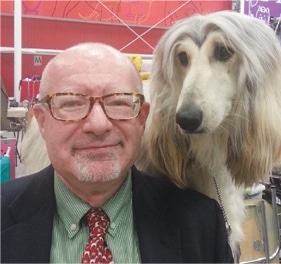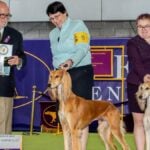
Home » Richard Reynolds – Breeder Interview by Allan Reznik
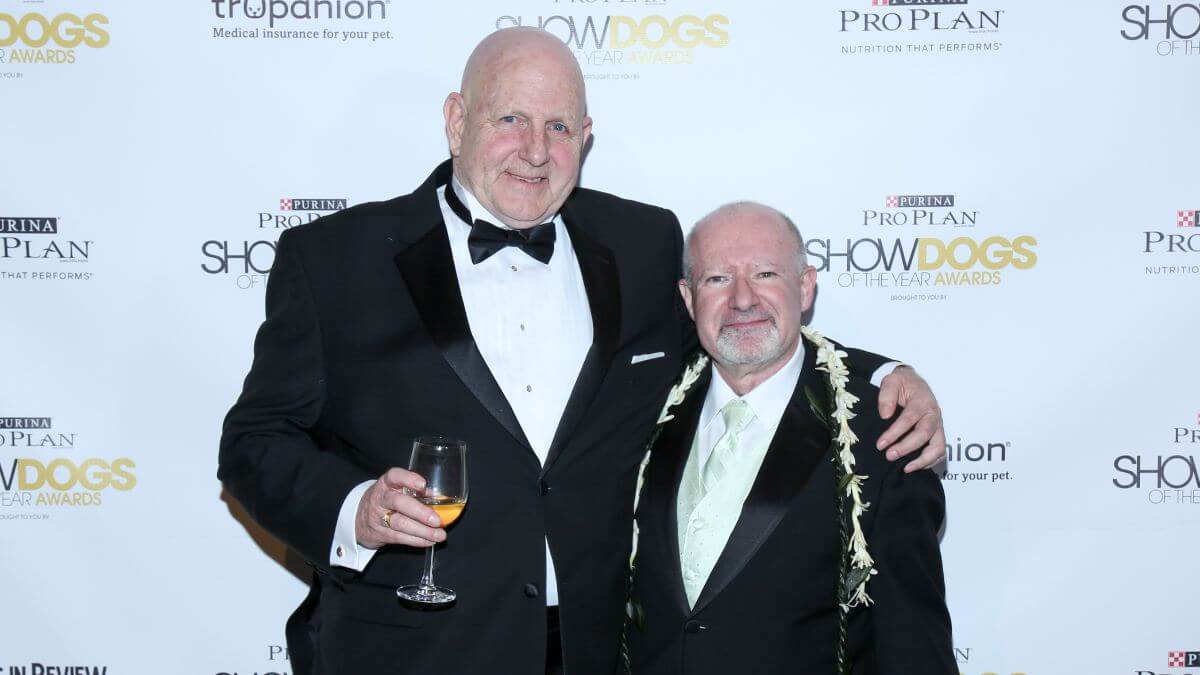
Richard Reynolds: Although I was born in Washington, DC, most of my callow youth was spent just outside Syracuse, New York. I was a total nerd, but hunting and fishing came along, and so did American Water Spaniels. In those days, dogs roamed free in the neighborhood and there was a very nice German Shepherd named King that would come every day to accompany me on my paper route.
Richard Reynolds: Not a doggie family at all! My widowed mother believed (quite correctly) that she would have to care for a dog, so my early pets were limited to parakeets, hamsters, and the occasional rescued wildlife. My interest in purebred dogs was awakened by an article by John Cross that appeared in the January 1954 issue of National Geographic. That piece, entitled “Westminster: The World Series of Dogdom,” stuck in my mind for years, and I kept the magazine under my mattress. I never expected to actually get to meet Patty Alston and Babs Tongren, who were featured in the article. I still have that magazine (and so does Jane Myers). To make up for the lack of the real thing, my mother bought me a large collection of china and porcelain dogs, which I proudly displayed and even entered in hobby shows at school.
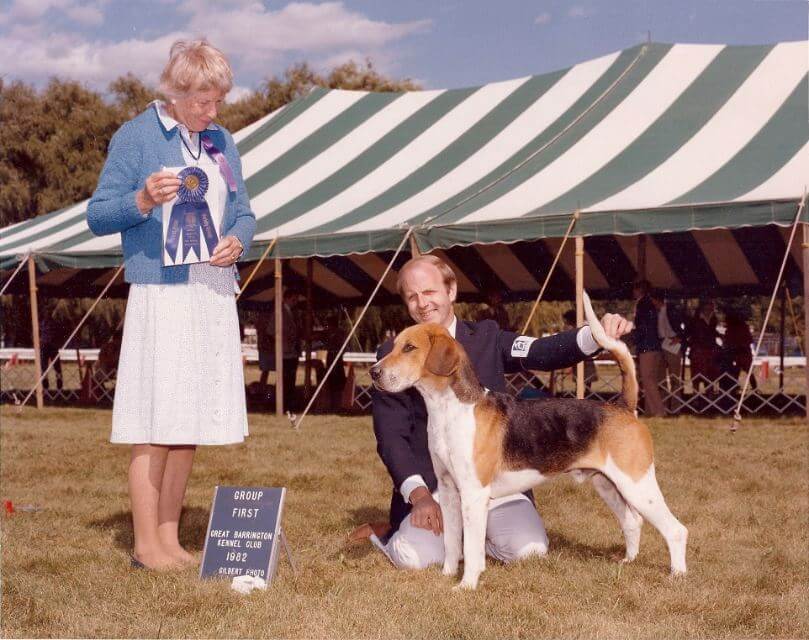
Richard Reynolds: My first Beagle was purchased for $35 from a gentleman by the name of Jay Hamilton, who was considered by many to be the local vet, notwithstanding his lack of licensure. My first dog show was with a friend’s Bedlington Terrier that was a tiny bit lacking in both quality and temperament. My first “real” show dog came from Virginia Coleman, and “Ginny” was my first mentor in Beagles. She knew exactly how to push a young kid’s buttons.
In the Foxhound era, it was Nancy Penn Smith Hannum, the MFH of Mr. Stewart’s Cheshire Foxhounds. Mrs. Hannum arranged for me to be tutored and befriended in England by the Duke of Beaufort. She wasn’t afraid to break with the tradition that prohibits individual ownership of hounds, and allowed me to own and show Mr. Stewart’s Cheshire Federal.
When it came to showing, Bob and Jane Forsyth were my idols and I was fortunate to fill in for them when they had ring conflicts. Jane Kay was my first handler, and it was through her inspiration that I became an AKC-licensed professional handler. Roberta (Campbell) Krohne was my terrier go-to person. And then and now, help and encouragement from Lydia Hutchinson and her mother, Mrs. Coleman, were very much appreciated.
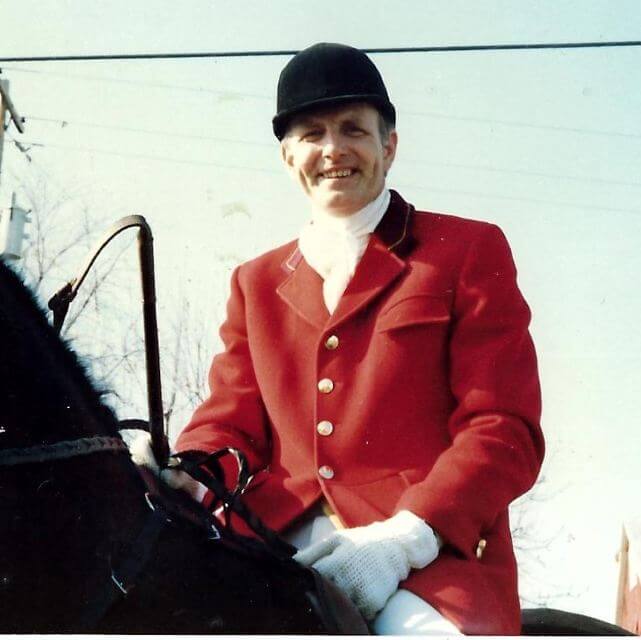
Richard Reynolds: The hard truth is that I fall in love far too easily. A dog will come along that captures my eye and my heart, and that dog (or bitch) becomes the center of a concentrated effort to preserve its conformation and functional ability. Plum Run Hunt was started originally to serve as a vehicle to import hounds. Everything changed, though, the first time the pack opened on a fox and actually hunted. From that minute onward, no matter what the breed, I tried—and continue to try—to produce only dogs that will perform their intended function and do a damned good job of it. Performance in the designated function is as important as conformation, and maybe more so. It is only through actual proof of functional ability and temperament that we can preserve the breed type that makes each purebred unique. It’s not much of a philosophy, but I try to breed a decent-looking and highly functional animal. My success in achieving that has been through line breeding to an outstanding example of the breed. My tagline says it all: “Life’s too short to hunt with an ugly dog!”
Richard Reynolds: The days of the large kennels, both mine and others’, are gone. I live in New Jersey about six miles from Times Square, and although my town has no specific dog limit, I try to keep it to around six dogs on the property. There are dozens more on co-ownership that sometimes rotate in and out for breeding, whelping or showing, but I mostly keep and work with the dogs that I need to hunt with. The Jagdterriers, because of their (ahem) “unique” temperaments, live in a very comfortable small kennel, but the rest are seemingly everywhere in the house.
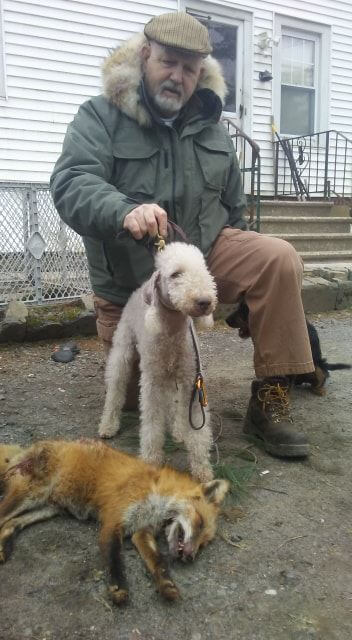
Richard Reynolds: I bred a lot of Beagles under the Englandale prefix and they can be found way back in some of today’s pedigrees. The truth is that I was never very happy with the Beagles I bred, and although they were winning in the show ring they didn’t make me happy. I think all Beaglers respect English Foxhounds, and by happenstance I became acquainted with Nancy Hannum. Mrs. Hannum drafted me Federal, who opened doors for the breed. Sometime thereafter, Parker Harris, a professional handler from upstate New York, died and I rescued a Canadian bitch he had been keeping. The English Foxhound gene pool is so robust and strong that even I couldn’t screw it up, and the Foxhounds proved much easier to breed successfully and produce hounds that not only pleased my eye, but worked alongside the best of them. The first humble beginnings of the dual-registered pack (AKC and MFHA) were the Springdale Hounds headquartered in Maryland on hunt country leased from the Green Spring Valley for $1.00 annually.
Terriers, of course, are part and parcel of foxhunting. This is especially true in the USA where foxes can almost always find an empty den to elude their pursuers. Our hunt came to include some broken-coated Jack Russell Terriers of the “shortie” (or puddin’) variety. They were a rag-tag lot, but performed very, very well. One of them became the housepet that travelled back and forth to the New York City apartment.
After leaving the hunt, I was looking for an AKC-registered terrier that I could show, and happened to meet up with Debbie Pritchard’s Norfolk Terriers on the street in Middleburg. I was able to acquire my first Norfolk from Eileen Needham’s Titanium breeding. To my very pleasant surprise, the Norfolk hunted as well or better than the JRTs and were ideally suited to my type of hunting at the time.
My current type of hunting requires a “hole dog,” and the Miniature Wirehaired Dachshunds arrived on the scene. After pestering Dee Hutchinson for several years, she finally consented to sell me a dog, and I acquired a proven hunting bitch (literally chained to a drain pipe in a trailer park). These two produced some of the finest working Dachshunds I have ever had the pleasure to hunt over, and I never spent a dime on show entries.
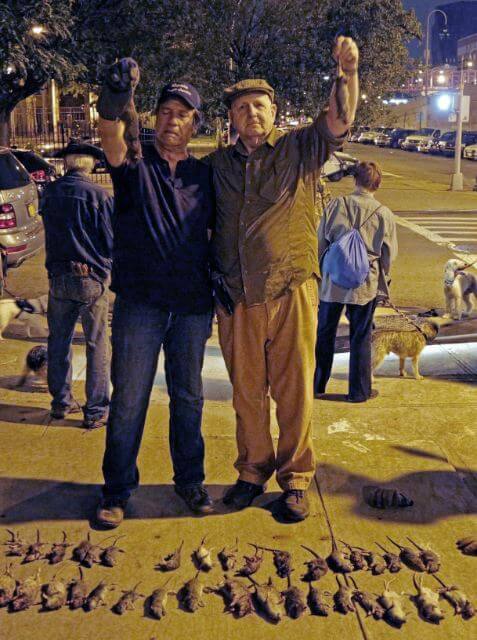
Richard Reynolds: “It was a dark and stormy night…” I vividly remember driving back alone from shows in Ohio in 1980, with a fairly large string of dogs. Tired, wet, hungry, and it wasn’t a particularly successful circuit. At that moment, judging seemed like a really good idea.
Richard Reynolds: The now famous Ryder’s Alley Trencherfed Society (R.A.T.S.) that hunts rats with terriers on the streets of New York City and other places actually had its roots at a dog show. The show was at Liberty State Park and professional handler Wendy Kellerman’s set-up was overrun with rats in broad daylight. I had a couple of fairly game Norfolk Terriers that were brought over and made short work of the rats. The park superintendent saw the process and invited us back after the park closed. We hunted there for several years.
After the 9-11 tragedy in 2001, we shifted our hunts to the infamous Theater Alley and Ryder’s Alley in lower Manhattan. We’ve been prowling the alleys and promoting purebred dogs at work ever since. It’s a bit easier to sell dead rats to the media and the public at large than it is to promote purebred dogs. R.A.T.S. serves the city, the neighborhood residents, and the handlers, but most importantly, the dogs themselves. There’s nothing happier than a terrier when it’s killin’ stuff.
Richard Reynolds: I used to volunteer to judge at the rare breed shows that were common in New Jersey. I still do. There was also the good fortune to live in the same town as an active Spanish Water Dog fancier. She asked me to inseminate her dogs and I was happy to oblige. There were nine puppies resulting and I was asked to help whelp the litter. The fledgling parent club had, at the time, not a soul experienced with the rigors and mysteries of the AKC, and I found myself as the JEC. We got it done.
Over the years, my hunting has changed a bit, and the Norfolk Terriers were no longer the most suitable breed for hunting fox and raccoon. That brought me to acquire some Jagdterriers. They’re a nifty breed whose sole purpose in life is wanton destruction. When I got my first one I was told to “put a two-inch chain around his neck. Stake him out in the back of your property and throw him a live chicken every other day.” I carefully explained that I was a very experienced breeder and judge, and that I didn’t keep my dogs that way. Now, years later, the Jagds are frequently tethered, even in kennels. We haven’t gotten to the live chicken part yet, but I can see it coming. Owning and working the breed is a life-changing experience and I’m glad to have them. Someday soon there will be a written American Standard for the breed, but formal recognition isn’t a priority.
Richard Reynolds: I like to think that I lived through the “Golden Age” of dog shows. Things have changed, but every so often you get back to a show that is reminiscent of the way things used to be. The Crawfish Cluster in Hattiesburg, Mississippi, is one of those. A good show site, a caring show committee, and the overall emphasis on quality and hospitality over profit.
I’m not sure that the declining number of breeders is a bad thing. Overall, we are producing better dogs and the supply is keeping pace with demand. Today’s breeders are mostly more conscientious and certainly better educated than we were in the 1960s.
Richard Reynolds: I fully understand the “cold shoulder” that experienced breeders sometimes display. It’s the easy way out when asked the same questions over and over again. The same is true after investing time and money in newbies who drop out after just a little while. Still, unless we are more welcoming and inclusive of newcomers, we are all going to age out into oblivion. Sure, it’s a pain in the butt, but kindness and engagement with newcomers is very important.
Spend the time and teach what you know. Share your passion. Take a kid hunting. Invite new puppy owners to become involved. Let the public see your dogs at work and even encourage them to join in. Any one of these might be the magic wand that creates a lifelong devotee to purebred dogs.
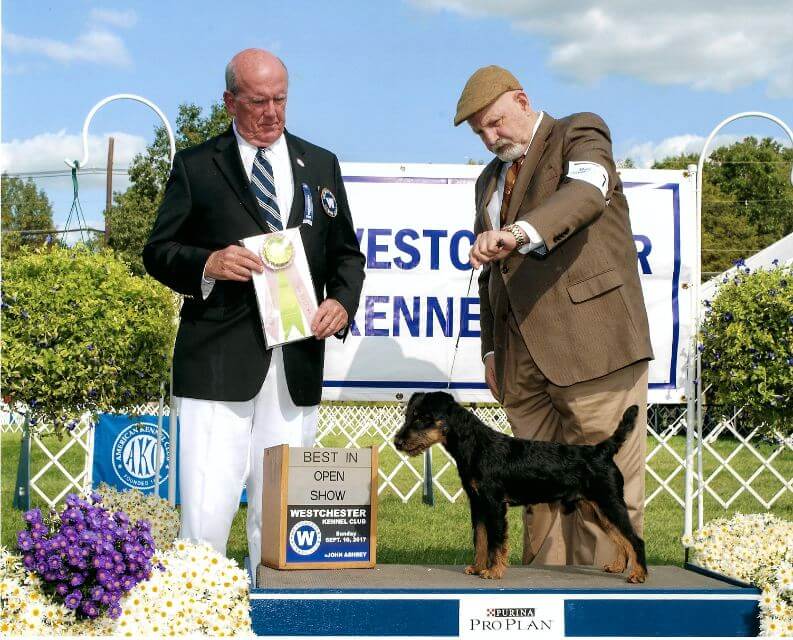
Richard Reynolds: I think most of us agree that there are too many shows, and that proliferation works to the disadvantage of all of them. We could consider having several TYPES of shows. Matches, Open shows, breed level only, working title only, etc. This concept would certainly level the playing field and would help to eliminate the need for large venues that has driven many clubs from their home turf.
Every so often one finds a show held in the “home” area of a club that is a major civic event in and of itself. Lots of kids, lots of day trippers, lots of questions, and a great time for all. The Celtic Cluster in York, Pennsylvania, is one such event, and the Hickories Circuit in the Southern Tier of New York is another.
Richard Reynolds: Please scatter my ashes in a fox den!
Richard Reynolds: I’m a semi-retired forensic consultant primarily dealing with fraud and white-collar crime for business and government. There’s also a burgeoning detection dog business that requires a certain amount of time and nurturing.
Alas, like many of my fellow judges, there is no life outside of dogs. My hobbies include attending (and learning to judge) hog bays (dogs), ratting at home and abroad (dogs), underground terrier work with… dogs. There’s some metal work and leather crafts (dogs) and, of course, writing articles like this (dogs again). Judging terrier trials and working terrier and hound events (yep, dogs).
As a public service announcement, though, I would like it known that I now own five tuxedos (to accommodate varying levels of weight), enjoy a wee dram of single malt scotch now and then, and am available for parties and other festivities almost any time.
